Related Research Articles
The Synod of Ancyra was an ecclesiastical council, or synod, convened in Ancyra, the seat of the Roman administration for the province of Galatia, in 314. The season was soon after Easter; the year may be safely deduced from the fact that the first nine canons are intended to repair havoc wreaked in the church by persecution, which ceased after the overthrow of Maximinus II in 313. Only about a dozen bishops were present, nonetheless representing nearly every part of Syria and Asia Minor. Either Vitalis, Bishop of Antioch, or Marcellus of Ancyra presided, and possibly both were present, although the Libellus Synodicus, also known as the Synodicon Vetus, assigns to the latter.
Priscillian was a wealthy nobleman of Roman Hispania who promoted a strict form of Christian asceticism. He became bishop of Ávila in 380. Certain practices of his followers were denounced at the Council of Zaragoza in 380. Tensions between Priscillian and bishops opposed to his views continued, as well as political maneuvering by both sides. Around 385, Priscillian was charged with sorcery and executed by authority of the Emperor Maximus. The ascetic movement Priscillianism is named after him, and continued in Hispania and Gaul until the late 6th century. Tractates by Priscillian and close followers, which were thought lost, were discovered in 1885 and published in 1889.
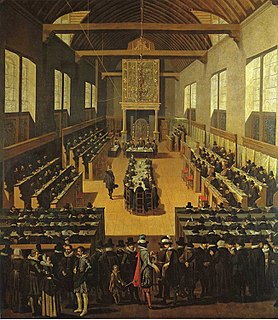
The Synod of Dort was an international Synod held in Dordrecht in 1618–1619, by the Dutch Reformed Church, to settle a divisive controversy caused by the rise of Arminianism. The first meeting was on 13 November 1618 and the final meeting, the 180th, was on 29 May 1619. Voting representatives from eight foreign Reformed churches were also invited. Dort was a contemporary English term for the town of Dordrecht.
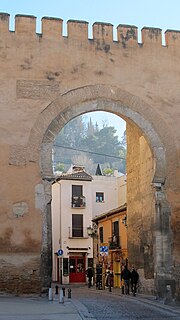
The Synod of Elvira was an ecclesiastical synod held at Elvira in the Roman province of Hispania Baetica, now Granada in southern Spain. Its date has not been exactly determined but is believed to be in the first quarter of the fourth century, approximately 305–6. It was one of three councils, together with the Synod of Arles (314) and the Synod of Ancyra, that first approached the character of general councils and prepared the way for the first ecumenical council. It was attended by nineteen bishops and twenty-six presbyters, mostly resident in Baetica. Deacons and laymen were also present. Eighty-one canons are recorded, although it is believed that many were added at later dates. All concern order, discipline and conduct among the Christian community. Canon 36, forbidding the use of images in churches, became a bone of contention between Catholic and Protestant scholars after the Protestant Reformation.
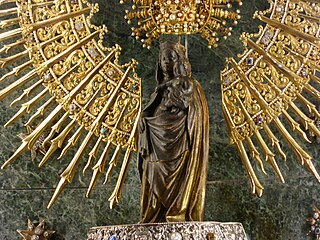
Our Lady of the Pillar is the name given to the Blessed Virgin Mary in the context of the traditional belief that Mary, while living in Jerusalem, supernaturally appeared to the Apostle James the Greater in AD 40 while he was preaching in what is now Spain. Those who adhere to this belief consider this appearance to be the only recorded instance of Mary exhibiting the mystical phenomenon of bilocation. Among Catholics, it is also considered the first Marian apparition, and unique because it happened while Mary was still living on Earth.
The Councils of Carthage were church synods held during the 3rd, 4th, and 5th centuries in the city of Carthage in Africa. The most important of these are described below.
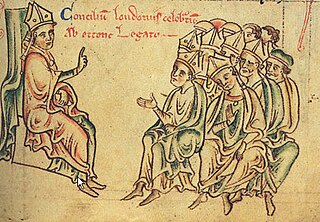
Synods of Westminster were certain of the more important ecclesiastical councils held within the present bounds of London. Though the precise locality is occasionally uncertain, the majority of the medieval synods assembled in the chapter-house of old St Paul's, or the former chapel of St Catherine within the precincts of Westminster Abbey or at Lambeth. The councils were of various types, each with a constitutional history of its own. Before the reign of Edward I, when convocation assumed substantially its present form, there were convened in London various diocesan, provincial, national and legatine synods; during the past six centuries, however, the chief ecclesiastical assemblies held there have been convocations of the province of Canterbury.

From the 5th century to the 7th century AD, about thirty synods, variously counted, were held at Toledo in what would come to be part of Spain. The earliest, directed against Priscillianism, assembled in 400. The "third" synod of 589 marked the epoch-making conversion of King Reccared from Arianism to orthodox Chalcedonian Christianity. The "fourth", in 633, probably under the presidency of the noted Isidore of Seville, regulated many matters of discipline and decreed uniformity of liturgy throughout the kingdom. The British Celts of Galicia accepted the Latin rite and stringent measures were adopted against baptized Jews who had gone back to their former faith. The "twelfth" council in 681 assured to the archbishop of Toledo the primacy of Hispania. As nearly one hundred early canons of Toledo found a place in the Decretum Gratiani, they exerted an important influence on the development of ecclesiastical law.

José Rebolledo de Palafox y Melzi, 1st Duke of Saragossa was a Spanish general who fought in the Peninsular War.
Beginning with three synods convened between 264 and 269 in the matter of Paul of Samosata, more than thirty councils were held in Antioch in ancient times. Most of these dealt with phases of the Arian and of the Christological controversies. For example, the Catholic Encyclopedia article on Paul of Samosata states:
It must be regarded as certain that the council which condemned Paul rejected the term homoousios; but naturally only in a false sense used by Paul; not, it seems because he meant by it a unity of Hypostasis in the Trinity, but because he intended by it a common substance out of which both Father and Son proceeded, or which it divided between them, — so St. Basil and St. Athanasius; but the question is not clear. The objectors to the Nicene doctrine in the fourth century made copious use of this disapproval of the Nicene word by a famous council.

Braulio was bishop of Zaragoza and a learned cleric living in the Kingdom of the Visigoths.
The Councils of Nîmes is the name given to a series of four religious synods that took place in Nîmes, southern France, during the Middle Ages.

The second siege of Zaragoza was the French capture of the Spanish city of Zaragoza during the Peninsular War. It was particularly noted for its brutality. The city had never stood a chance. However, the desperate resistance put up by the Army of Reserve and its civilian allies had been heroic: a great part of the city lay in ruins, the garrison had suffered 24,000 deaths being augmented by 30,000 civilians dead.
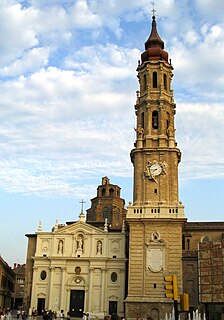
The Archdiocese of Saragossa is a Roman Catholic ecclesiastical territory located in north-eastern Spain, in the province of Zaragoza, part of the autonomous community of Aragón. The archdiocese heads the ecclesiastical province of Saragossa, having metropolitan authority over the suffragan dioceses of Barbastro-Monzón, Huesca, Tarazona, and Teruel and Albarracín.
The Council of Serdica, or Synod of Serdica, was a synod convened in 343 at Serdica in the civil diocese of Dacia, by Emperors Constans I, augustus in the West, and Constantius II, augustus in the East. It attempted to resolve the Arian controversy, and was attended by about 170 bishops. It was convened by the two augusti at the request of Pope Julius I.
Maximus was the first Visigothic bishop of Zaragoza (Hispania) in 592–619. He was also a theologian and historian.

Saint Valerius of Saragossa is the patron saint of Saragossa. He was bishop of this city from 290 until his death. He assisted at the Council of Elvira. His feast day is January 29.

Saint Engratia is venerated as a virgin martyr and saint. Tradition states that she was martyred with eighteen companions in 303 AD. She should not be confused with the 8th-century Spanish martyr of the same name.
Jus antiquum is a period in the legal history of the Catholic Church, spanning from the beginning of the church to the Decretum of Gratian, i.e. from A.D. 33 to around 1150. In the first 10 centuries of the church, there was a great proliferation of canonical collections, mostly assembled by private individuals and not by church authority as such.
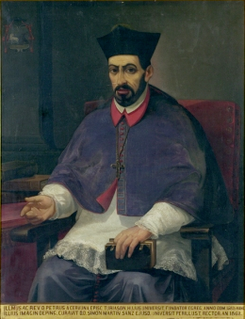
Pedro Cerbuna del Negro was a Spanish monk, bishop of Tarazona and founder of the University of Zaragoza. He was born in Fonz and died in Calatayud.
References
- H. T. Bruns, Canones apostolorum et conciliorum saeculorum iv., v., vi., vii., pars altera (Berlin, 1839)
- Pius Bonifacius Gams, Die Kirchengeschichte von Spanien (Regensburg, 1862-1879).
- This article incorporates text from a publication now in the public domain : Rockwell, William Walker (1911). "Saragossa, Councils of". In Chisholm, Hugh (ed.). Encyclopædia Britannica . Vol. 24 (11th ed.). Cambridge University Press. p. 204.